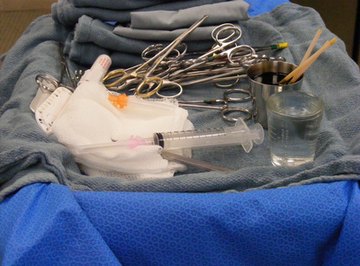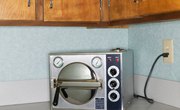
It is crucial to spore test an autoclave to make sure that the autoclave is sterilizing equipment properly. Spore tests, also known as biological indicator tests, test whether highly resistant strains of bacterial spores survive the sterilization process.
Autoclaves may fail due to mechanical faults or operator errors, causing microorganisms to survive. All autoclave operators should be familiar with how to use spore and chemical indicator tests.
Purpose of Sterilization
Sterilization is the process in which microorganisms are killed to prevent their growth and spreading. By killing all the microorganisms, one can be sure that the equipment or object is clean and safe for use on the next project. Sterilization is considered one of the standard precautions used to prevent transmission of bacteria, viruses and other microbes.
Different industries use sterilization to achieve different goals. Health industries sterilize equipment to prevent the spread of disease between patients. Food industries sterilize to prevent the growth of harmful bacteria that cause illness. Research laboratories use sterilization to avoid cross-contamination between samples.
Sterilization vs. Disinfection
The purpose of both sterilization and disinfection is to clean objects by killing microorganisms. Disinfection kills most microorganisms except for highly-resistant things like bacterial spores.
For a process or substance to be classed as sterilization, all microorganisms must be killed.
Highly Resistant Bacterial Spores
Bacterial spores form when environmental conditions are not suitable, unlike fungal spores, which are part of the reproductive process. They keep bacterial cells genetic material (DNA) safe until conditions are better and there are enough water and nutrients around for the bacteria to survive.
Three layers, the spore wall, cortex and keratin outer coating, protect the DNA, which is contained in a cytoplasmic membrane in the center of the spore. Some bacterial spores have enzymes such as heat-resistant catalase that provide the bacterial spore with extra protection to keep them alive for years.
Types of Sterilization
The most common ways to sterilize objects are the use of heat or the use of chemicals such as glutaraldehyde. Depending on the object getting sterilized, it is often preferable to use heat sterilizers because chemical sterilizers are often highly toxic and corrosive.
Heat sterilizers either use dry heat or steam with maximum temperatures above 250 degrees Fahrenheit (121 degrees Celsius) to kill microorganisms. Autoclaves use the steam heat method and are the most widely-used sterilization method in the world.
Autoclave Sterilization
Autoclaves work by removing all the air from the central chamber and replacing it with hot steam using either a vacuum pump or displacement method. Objects inside the autoclave are then heated to around 270 degrees Fahrenheit (132 degrees Celsius) for approximately 20 minutes.
This process generates high pressures inside the autoclave. The cylindrical shape, external locking mechanism and safety valve help the machine to handle the pressure.
Spore Test Autoclave Process
Spore tests are recommended to do each week to ensure the autoclave is functioning properly. Spore tests contain nonpathogenic bacterial spores of species such as Geobacillus stearothermophilus either in a vial or impregnated into filter paper. It is essential to follow the spore test manufacturers instructions.
The testing process is as simple as placing the test into the autoclave amongst other instruments and running a cycle as per usual. It is recommended to move the location of the chemical and biological autoclave test kits around the chamber to identify if there are any areas not being treated properly.
The test strip or vial can then be sent away for analysis or placed in an incubator onsite to culture any bacteria that survived. If bacteria grew, then sterilization wasn't completed.
Interpreting Results
It is important to note that a negative result doesn't necessarily prove that sterilization worked properly, but a positive result proves something went wrong.
A positive result could be due to a range of issues such as mechanical faults, overloading the chamber with equipment, incorrect settings or interruption during the cycle. In the event of a positive result, alternative sterilization processes should be put in place until the issue is resolved.
References
- Alfa Medical: Sterilization
- CDC: Sterilization: Monitoring
- Duraline Systems: How Do Autoclaves Work?
- Alfa Medical: Types of Sterilization
- Microbe Online: Bacterial Spores: Structure, Importance and Examples of Spore Forming Bacteria
- Certo Clav: Chemical and Biological Autoclave Indicators
- Texas Dental Association: Sterilizer Monitoring: How It Should Be Done, and What to Do If You Get a Positive Test Result
About the Author
Adrianne Elizabeth is a freelance writer and editor. She has a Bachelor of Science in Ecology and Biodiversity, and Marine Biology from Victoria University of Wellington in New Zealand. Driven by her love and fascination with all animals behavior and care, she also gained a Certificate in Captive Wild Animal Management from UNITEC in Auckland, New Zealand, with work experience at Wellington Zoo. Before becoming a freelance writer, Adrianne worked for many years as a Marine Aquaculture Research Technician with Plant & Food Research in New Zealand. Now Adrianne's freelance writing career focuses on helping people achieve happier, healthier lives by using scientifically proven health and wellness techniques. Adrianne is also focused on helping people better understand ecosystem functions, their importance, and how we can each help to look after them.
Photo Credits
Ready for surgery image by DGGallery from Fotolia.com
